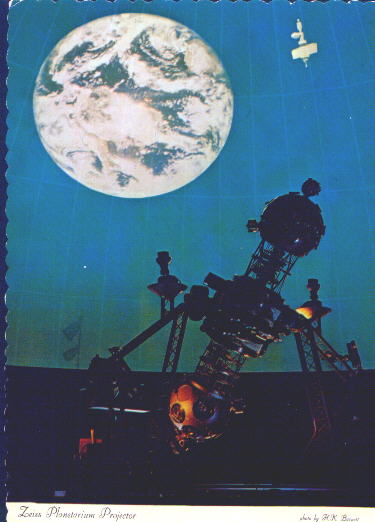
By Glenn A. Walsh
Reporting for SpaceWatchtower
Yes, it is another "SuperMoon" this month, as some people refer to it.
Actually, the August Full Moon occurs very near the monthly perigee, or closest point in the Moon's orbit of the Earth. And while the Full Moon of July was considered a "SuperMoon" as will the Full Moon of September, this month the Moon will be closer to the Earth, and appear larger in the sky, than at any other time in 2014.
Since the Moon is closer to Earth than it typically is, the Moon looks a bit larger than usual in the sky, particularly near the horizon during Moon rise and Moon set (actually, the Moon always looks a little bigger during Moon rise and Moon set, as people's vision then compares the size of the Moon to other objects near the horizon).
The August Full Moon occurs on Sunday Afternoon, 2014 August 10 at 2:09 p.m. EDT / 18:09 Coordinated Universal Time. About nine minutes earlier, the Moon will have reached the point in its orbit of perigee, when it is only 356,896 kilometers from the Earth. Due to this Full Moon perigee, larger-than-normal high-tides are predicted along ocean coastlines on Sunday.
The Full Moon of August is known as the Sturgeon Moon in the Northern Hemisphere. It was so named by the Native American fishing tribes of northern North America, particularly around the Great Lakes, as this fish was most readily caught during the month of August.
Other tribes knew the August Full Moon as the Red Moon, due to the Moon's reddish appearance as it rises in the mid-Summer's humid haze. This Full Moon was also known as the Green Corn Moon or just Corn Moon and the Grain Moon for crops readying for harvest, as well as the Cow Buffalo Moon. And, there is record of some tribes calling it the Harvest Moon, while most tribes kept this designation for the September Full Moon.
In the Southern Hemisphere, the August Full Moon is known as the Snow Moon, Storm Moon, Hunger Moon, and Wolf Moon.
More on the so-called "SuperMoon": Link >>> http://en.wikipedia.org/wiki/Supermoon
More on the Full Moon: Link >>> http://en.wikipedia.org/wiki/Full_moon
More on Full Moon names ---
Link 1 >>> http://earthsky.org/astronomy-essentials/full-moon-names
Link 2 >>> http://en.wikipedia.org/wiki/Full_moon#Harvest_and_Hunter.27s_moons
Link 3 >>> http://www.farmersalmanac.com/full-moon-names/
Related Blog Post ---
July's Buck Moon & High Tides (2014 July 11):
Link >>> http://spacewatchtower.blogspot.com/2014/07/julys-buck-moon-high-tides.html
Source: Glenn A. Walsh, Reporting for SpaceWatchtower, a project of Friends of the Zeiss.
2014: 75th Year of Pittsburgh's Buhl Planetarium

Want to receive SpaceWatchtower blog posts in your inbox ?
Send request to < spacewatchtower@planetarium.cc >..
gaw
Glenn A. Walsh, Project Director,
Friends of the Zeiss < http://buhlplanetarium.tripod.com/fotz/ >
Electronic Mail - < gawalsh@planetarium.cc >
SpaceWatchtower Blog: < http://spacewatchtower.blogspot.com/ >
Also see: South Hills Backyard Astronomers Blog: < http://shbastronomers.blogspot.com/ >
Barnestormin: Writing, Essays, Pgh. News, & More: < http://www.barnestormin.blogspot.com/ >
About the SpaceWatchtower Editor / Author: < http://buhlplanetarium2.tripod.com/weblog/spacewatchtower/gaw/ >
SPACE & SCIENCE NEWS, ASTRONOMICAL CALENDAR:
< http://buhlplanetarium.tripod.
Twitter: < https://twitter.com/spacewatchtower >
Facebook: < http://www.facebook.com/pages/
Author of History Web Sites on the Internet --
* Buhl Planetarium, Pittsburgh:
< http://www.planetarium.
* Adler Planetarium, Chicago:
< http://adlerplanetarium.
* Astronomer, Educator, Optician John A. Brashear:
< http://johnbrashear.tripod.com >
* Andrew Carnegie & Carnegie Libraries:
< http://www.andrewcarnegie.
* Civil War Museum of Andrew Carnegie Free Library:
< http://garespypost.tripod.com >
* Duquesne Incline cable-car railway, Pittsburgh:
< http://inclinedplane.tripod.
* Public Transit:
< http://andrewcarnegie2.tripod.
No comments:
Post a Comment